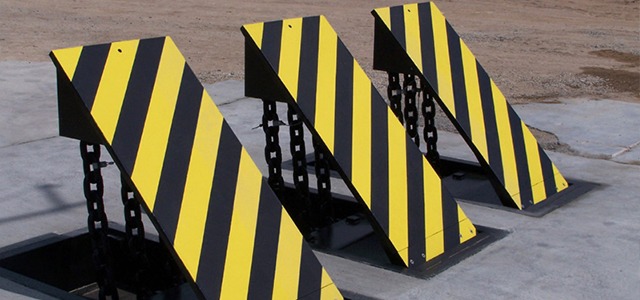The Definitive Guide to Wedge Barriers
Table of ContentsWhat Does Wedge Barriers Do?Wedge Barriers Fundamentals Explained


18 may be done faster, easily, and price successfully. FIG. In certain personifications, the anchor 30 may be a steel structure including plates, beams(e. g., I-beams ), and/or various other structures that article source are secured within the foundation 14, which might be concrete. At the surface my blog area 12, an upper side 28 of the support 30 may go to the very least partially exposed
, thereby making it possible for the add-on of the barrier 10 to the support 30. g., threaded holes)in several light beams or plates of the anchor 30 might be exposed to the surface area 12. In this manner, screws 32 or various other mechanical bolts might be utilized to safeguard the barrier 10 to the support 30. As the obstacle 10 is installed to the surface 12 of the structure 14, collection of debris and various other material beneath the barrier may be minimized, and components of the bather 10 might not be revealed to listed below grade settings. As shown by referral numeral 52, the lifting system 50 consists of components disposed under the wedge plate 16. The components 52 underneath the wedge plate 16 might consist of an electromechanical actuator, a webcam, one or more web cam surface areas, and so forth. In addition, the training mechanism 50 includes a springtime setting up 54
The spring pole 58 is paired to a camera(e. g., web cam 80 received FIG. 4) of the lifting system 50. The springs 60 disposed regarding the spring pole 58 are kept in compression by spring sustains 62, including a dealt with spring assistance 64. That is, the set springtime support 64 is fixed dig this about the foundation 14 et cetera of the bather 10.
3 Simple Techniques For Wedge Barriers
g., springtime support 65 )may be dealt with to the end of the springtime rod 58 to make it possible for compression of the springs 60. As the springtimes 60 are compressed between the spring sustains 62, the springtime assembly 54 produces a pressure acting on the cam coupled to the spring pole 58 in an instructions 66. The continuing to be pressure applied to
the cam to deploy release wedge plate 16 may might provided offered an electromechanical actuator 84 or other actuator. Because of this, the spring setting up 54 and the actuator 84(e. g., electromechanical actuator)might run with each other to convert the cam and lift the wedge plate 16.
As discussed over, in the deployed setting, the wedge plate 16 offers to block accessibility or travel past the barrier 10. The barrier 10(e. g., the wedge plate 16 )might block pedestrians or automobiles from accessing a residential or commercial property or path. If a car is taking a trip towards the released wedge plate 16(e. For instance, in one situation, the safety and security legs 86 may be extended throughoutmaintenance of the barrier 10.